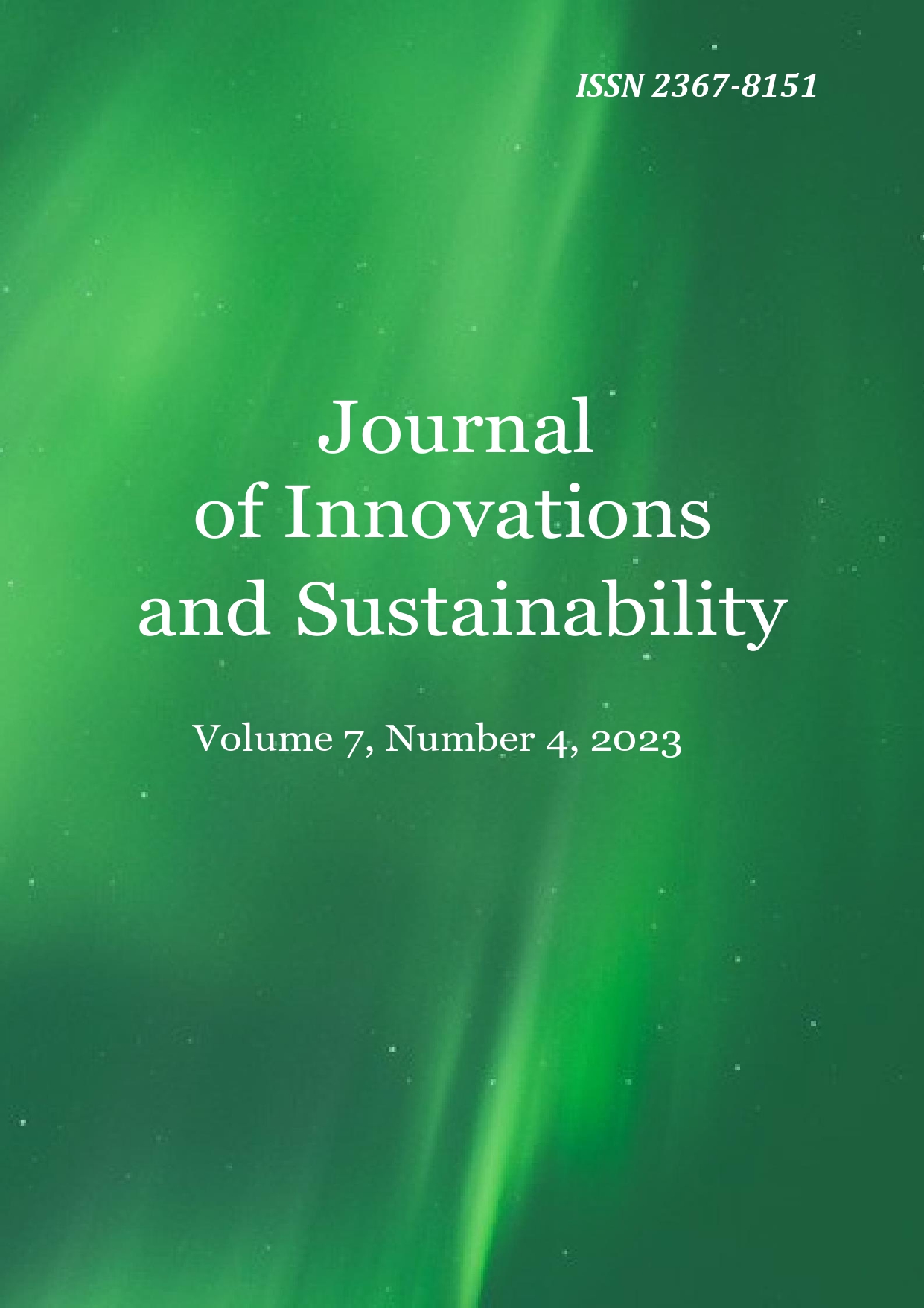Priorities for preserving the productive capacity of human potential of Ukraine in the light of the foreign countries’ policies
DOI:
https://doi.org/10.51599/is.2023.07.04.02Ключови думи:
human potential, human capital, Ukrainian youth, migration mobility, foreign countries’ policies.Абстракт
Purpose. The article summarizes the practical aspects of the policy of foreign states regarding the involvement of Ukrainian youth and the factors regulating their migration mobility with the aim of preserving the human capital of Ukraine in the conditions of russian aggression.
Results. A significant increase in external migration flows among Ukrainian citizens as a result of hostilities and a deep socio-economic crisis in Ukraine had a significant impact on the demographic situation in the state and its regions, led to significant changes in the sex-age structure of the population, a rapid reduction in domestic demand and labor supply, changed the level of population concentration in many regions and caused a number of other significant challenges. However, the problem of migration of Ukrainian youth has become particularly important, since this category of the population is the most active and mobile, but also the least socially and psychologically protected, so it needs special support from the state and public institutions. High migratory mobility of young people to recipient countries can contribute to increasing financial income from tuition fees, integrating educational institutions into the international educational and scientific system, reducing costs for training and education of qualified specialists, increasing the concentration of labor potential, developing the industrial complex, stimulating economic growth, reduction of labor shortage, growth of GDP, increase of revenues to the state budget. But at the same time, it also has the opposite negative effect, which, in particular, is manifested in the growth of competition in the educational services and labor markets, the decrease in the number of jobs, the spread of unemployment, especially among young people without work experience, etc. The article is devoted to the study of effective ways of regulating the migration mobility of Ukrainian youth. The impact of the migration of Ukrainian youth caused by russian aggression on the human capital of Ukraine and the formation of opportunities for its preservation is evaluated. The authors outlines ways to form a rational migration and social policy, which will allow implementing an effective scenario of managing Ukraine’s youth potential at both at the national and regional levels.
Scientific novelty. For the first time, the policy of many foreign countries regarding attracting the potential of Ukrainian youth is analyzed. The article outlines the initiatives of foreign scientific and educational institutions to support Ukrainian youth and their adaptation to the educational and social processes of recipient countries.
Practical value. Based on the assessment of the migration mobility of the Ukrainian youth and the analysis of the main initiatives of foreign countries regarding the attraction of its potential in the environment of the recipient countries, recommendations were developed to regulate the migration mobility of the Ukrainian youth in order to preserve the human capital of Ukraine and provide opportunities for its reproduction and further development.
Литература
Dembitska, A. V. (2013). Milestones international labor migration. Herald of I. I. Menchikov ONU, 18(4/1), 149–152. Available at: http://visnyk-onu.od.ua/journal/2013_18_4_1/38.pdf.
Malynovska, A. (2014). Mihratsiina polityka Yevropeiskoho soiuzu: vyklyky ta uroky dlia Ukrainy [Migration policy of the European Union: challenges and lessons for Ukraine]. Kyiv, NISD.
Pozniak, O. (2013). Trends in human trafficking in Ukraine. Available at: https://cadmus.eui.eu/bitstream/handle/1814/62829/Explana%20tory%20Notes_2013-66.pdf?sequence=1&isAllowed=y.
Savitska, O. P., & Tsono, V. V. (2013). Peculiarities of population migration processes in the conditions of globalization. Scientific bulletin of UNFU, 23(17), 295–303. Available at: https://nv.nltu.edu.ua/Archive/2013/23_17/295_Saw.pdf.
Libanova, E. M. (2018). External labor migration of Ukrainians: scope, causes, consequences. Demography and social economy, 2(33), 11–26. Available at: https://dse.org.ua/arhcive/33/1.pdf.
Libanova, E. M., & Pozniak, O. V. (2020). External labor migration from Ukraine: the impact of COVID-19. Demography and Social Economy, 4 (42), 25–40. https://doi.org/10.15407/dse 2020.04.025.
Libanova, E. (2019). Labour migration from Ukraine: key features, drivers and impact. Economics and Sociology, 12(1), 313–328. https:/doi.org/10.14254/2071-789X.2019/12-1/19.
Romanyuk, M. D. (2016). Foreign labor migration and re-emigration in the context of national security of Ukraine. Regional Economy, 4(82), 22–30. Available at: https://re.gov.ua/doi/re2016.04.022.php.
Ryndzak, O., Risnyy, O., & Bil, M. (2020). Potential migration investigation in the mechanism of labor market regulation. Research in World Economy, 11(3), 80–91. https://doi.org/10.5430/rwe.v11n3p80.
Ryndzak, O., & Bachynska, M. (2022). Conservation and development of human resources through the return migration policy. Agricultural and Resource Economics, 8(2), 105–123. https://doi.org/10.51599/are.2022.08.02.06.
Bil, M. M., Mulska, O. P., Baranyak, I. E., Makhonyuk, O. V., & Karpiak, M. O. (2021). Otsiniuvannia vplyvu mihratsiinoi mobilnosti molodi na liudskyi potentsial Karpatskoho rehionu [Evaluation of the impact of migration mobility of youth on the human potential of the Carpathian region]. Lviv, State Institution “Institute of Regional Studies named after M. I. Dolishnyi National Academy of Sciences of Ukraine”. Available at: https://ird.gov.ua/irdp/p20210035.pdf.
Bil, M., Irtyshcheva, I., Popadynets, N., & Voit, D. (2021). Population spatial mobility: monitoring, methodology of formation, features of regulation. Journal of Optimization in Industrial Engineering, 14(29), 209–215. https://doi.org/10.22094/joie.2020.677869.
Sadova, U. Y., & Makhoniuk, O. V. (2016). Institutional support for functioning of the transborder market of migration services. Regional Economy, 4, 31–38.
European Education and Culture Executive Agency (2022). Supporting refugee learners from Ukraine in schools in Europe. Luxembourg, Publications Office of the European Union. Available at: https://euneighbourseast.eu/news/publications/supporting-refugee-learners-from-ukraine-in-schools-in-europe.
Miroshnikova, A. (2022). How are Ukrainian schoolchildren taught abroad? Osvitoria Media. Available at: https://osvitoria.media/opinions/yak-navchayut-ukrayinskyh-shkolyariv-za-kordonom.
Implementing Decision of the Council (EC) 2022/382 establishing the existence of a mass influx of displaced persons from Ukraine within the meaning of Article 5 of Directive 2001/55/EC and introducing temporary protection (2022). Available at: https://ips.ligazakon.net/document/MU22006?an=2.




